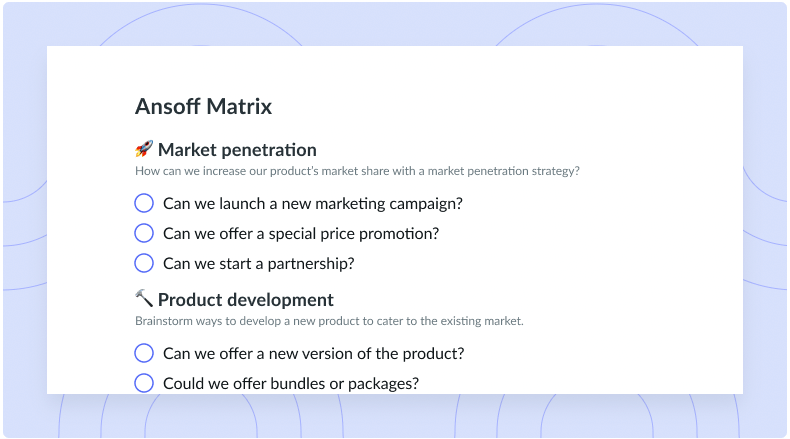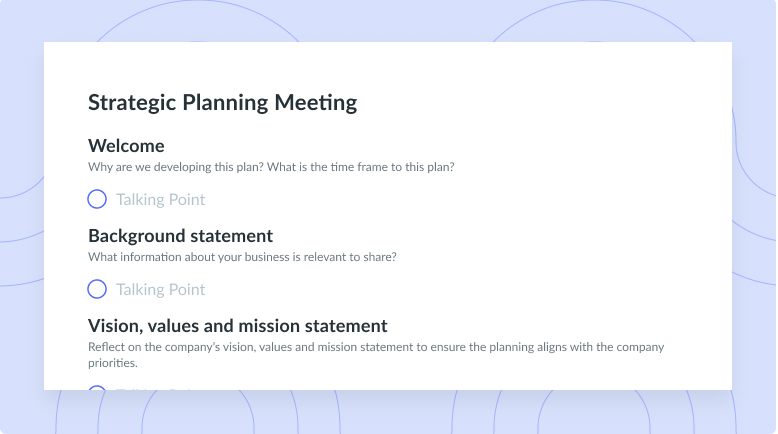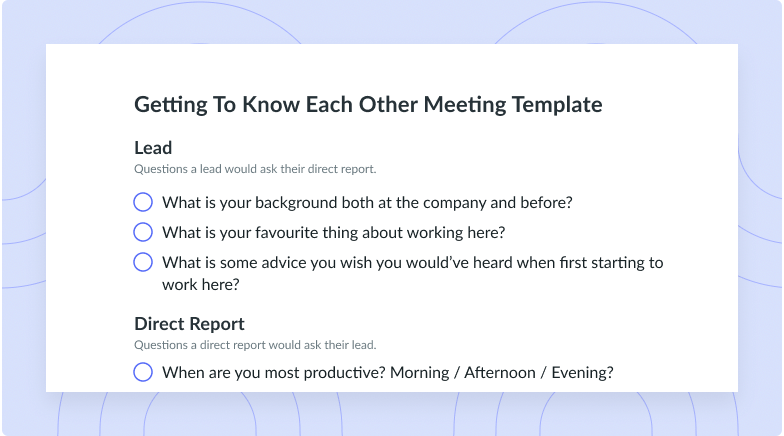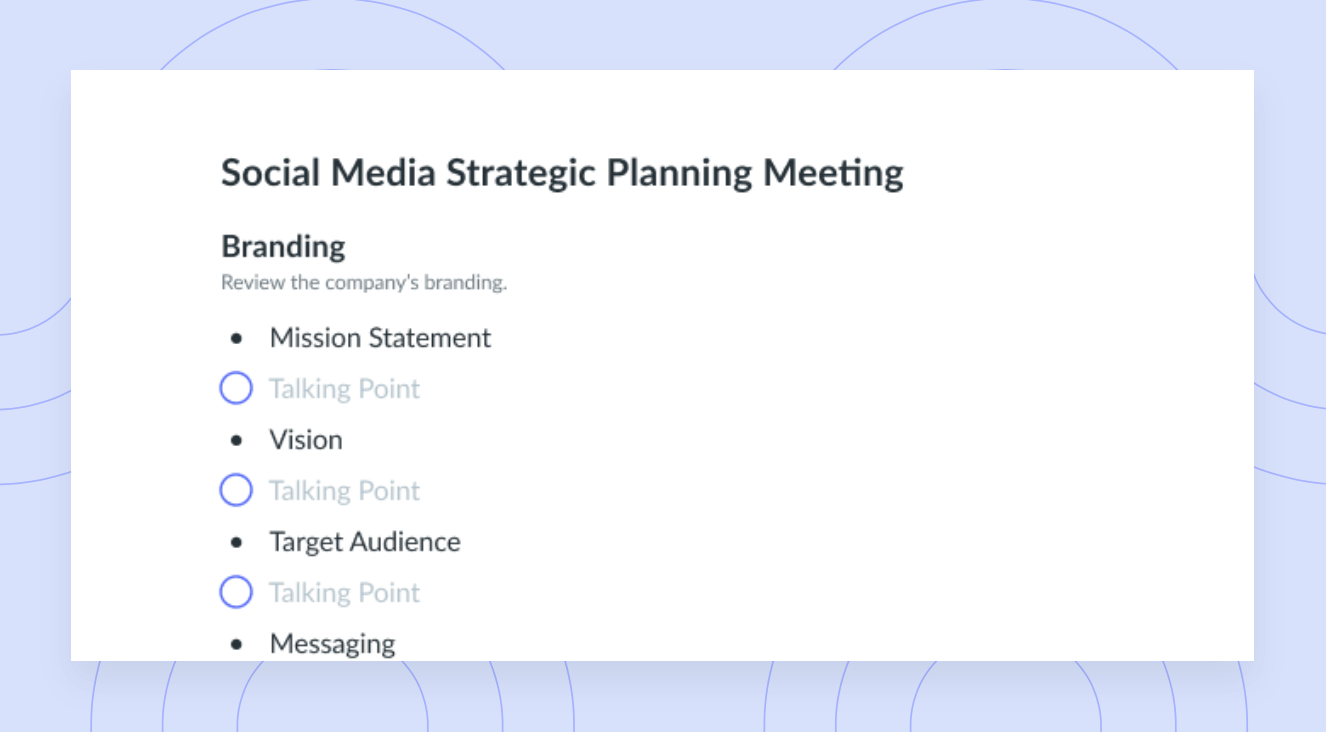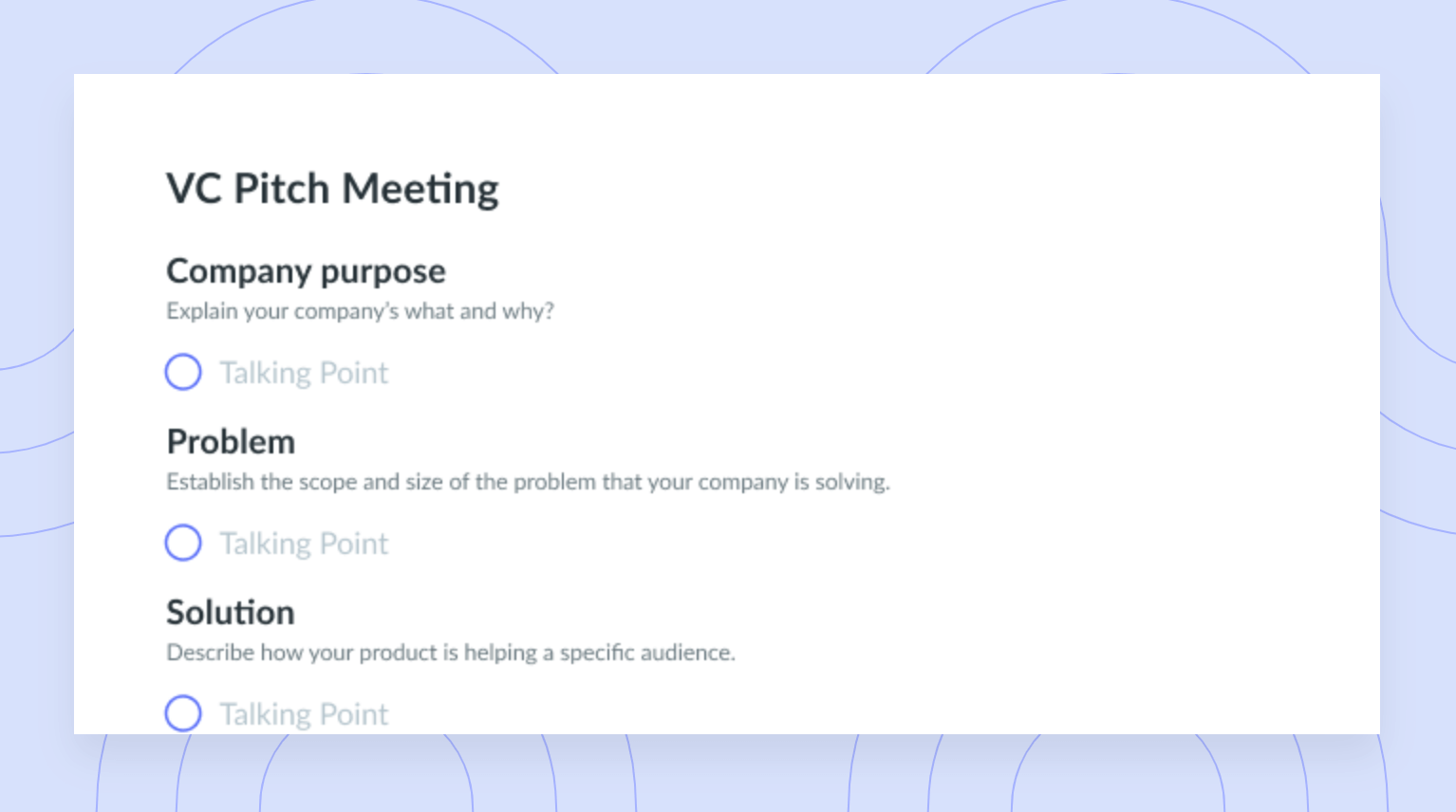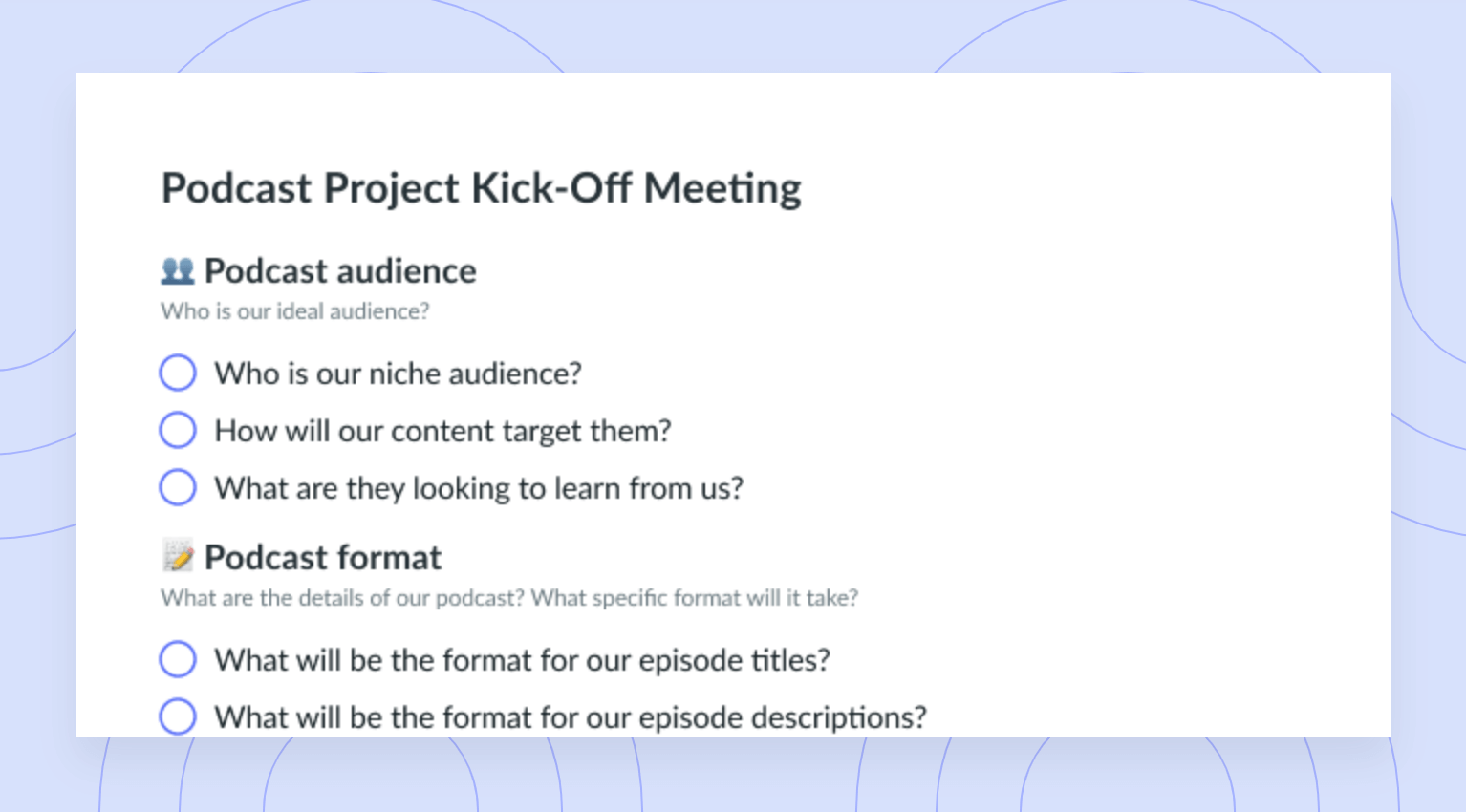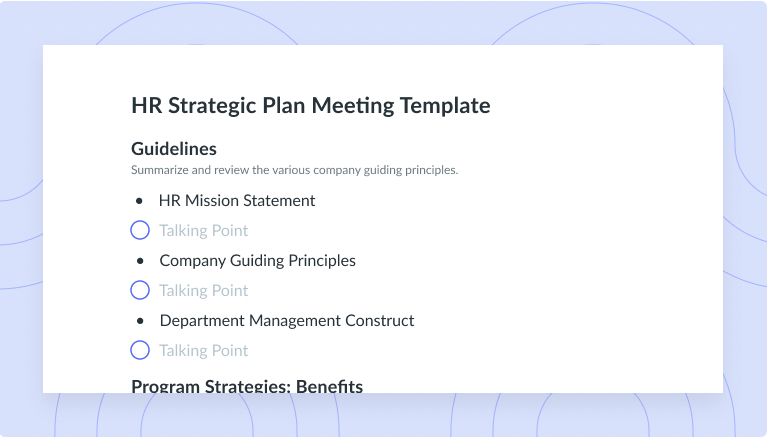11 Strategic Ways to Get Buy-In for Your Ideas [+ Free Template]
Getting buy-in from your managers will help them believe in your point of view and decisions. Learn how, plus get a free template!
How easy is it to convince a group of kids to go for ice cream after their soccer game? Or to go for a nice, refreshing dip in the pool on a hot day?
In most cases, it’s probably pretty easy. So easy, in fact, that you might have them asking you to go do those things.
What about the cases where they don’t want to do something? For example, if you need to convince them that broccoli really is delicious and good for them?
Getting others to see your line of thinking and agree to the cause is called getting buy-in, and it’s a skill you’ll need to perfect if you want to have it your way in the workplace, too.
What is getting buy-in?
Getting buy-in means finding a way for important decision-makers to see your point of view and agree with you on your action plan. While in most cases, getting buy-in doesn’t work out exactly as you may have wished, at the minimum, getting buy-in will mean that your boss (or even their boss) approves of you taking the next step in a project, knowing that you have a great vision and a plan for reaching your goals.
The process of getting buy-in can be tedious and lengthy, or short and certain, depending on the complexity, size, and impact of your ask.

Achieve buy-in with effective communication
A well-run meeting can foster communication and collaboration to help you achieve buy-in by including an agenda the whole team can contribute to. Try using a tool like Fellow!

Why is it important to get buy-in?
It’s likely that your manager, or even another manager above them, is the one who holds access to budget and human resource allocations for future projects. As such, they’re likely the same person who will approve or disapprove of the project’s ability to go ahead. Getting buy-in from upper managers means that your organization’s leaders have a strong belief in your vision, as well as your ability to complete the task ahead.
11 ways to get buy-in
- Have a clear vision
- Practice the way you deliver the pitch
- Set goals and track them
- Communicate the progress
- Ask for and incorporate feedback
- Be transparent
- Showcase the benefits of your plan
- Tailor your pitch to your audience
- Be mindful of your timing
- Break your pitch into manageable pieces of information
- Host a meeting to share your idea
1Have a clear vision
If you can’t articulate your request in a simple sentence, then there’s a great chance that you don’t even know what you’re asking for. When you know exactly what you want, you’ll be able to produce a proposal that is short and concise, and that specifies one target goal.
If you’re having trouble clarifying your vision, ask yourself:
- What do you want to happen?
- Why do you want this thing to happen?
When upper management sees that you have a clear vision, it will be easier for them to see exactly what they’d be approving (which makes it much more likely for you to generate buy-in).
2Practice the way you deliver the pitch
Managers don’t always have a ton of time to devote to pitches that aren’t exactly aligned with their ongoing strategies. If you’re planning to pitch something that’s a bit out of left field or comes with a high price tag, you should practice how you’re going to present your pitch. Consider tone, speed, and clarity when pitching. Practice with a co-worker or by presenting to yourself in a mirror.
Remember that your pitch audience might have some questions to ask about your project; identify some of these questions ahead of the pitch presentation and practice responding to those as well.
3Set goals and track them
Executives love to know metrics. How is your project going to contribute to the company? Get as specific as you can, and consider building SMART goals that tie into your organization’s OKRs (objectives and key results). Having these specific goals helps you create a clear tie between the work you’re doing and the benefit that the company can expect to see within a specific period.
With Fellow, you can track objectives directly in the platform. As you present your pitch, consider having these objectives already added to your meeting so it’s easy for your audience to see and understand your goals.
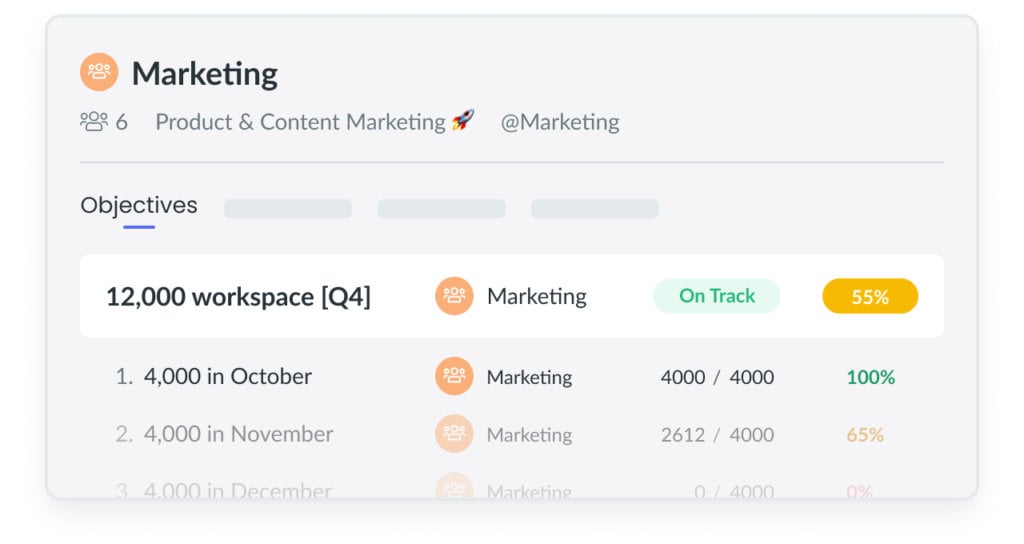
4Communicate the progress
Once you have great goals built out, with a plan for how you’re going to achieve them, you need to prove to your upper managers that your plan is actually in motion, and that you’re working towards getting results. Having regular check-in meetings with your manager or sharing updates at team meetings can be great ways to share progress with those with whom you’re working.
Additionally, you might choose to use a productivity tool such as Asana, Trello, or Notion to track the status of specific project components. This tracking helps those in your wider team get instant updates on the progress of your project. With this level of transparency and communication, you build trust with those who bought into your idea.
5Ask for and incorporate feedback
Getting feedback is important if you want to continuously optimize your work. Before your pitch, get in contact with your manager or another co-worker who can review your information, watch your pitch, and provide feedback.
Normalize building a culture of feedback by having a feedback round be the goal of your meeting. With Fellow, you can put a note into your meeting agenda to identify specific areas on which you want feedback so you can ensure you get a comprehensive second-hand look at your pitch.

6Be transparent
As much as we can all hope and dream for all of our projects to be major successes, that’s not often the case. Be open with your audience about possible risks and ways the project could fail. For example, you might be pitching a high-investment project with little known data, which could pose a financial risk to the company. Alternatively, there may be legislation or existing protocols in place which can slow down your project’s speed if it were to be approved.
To back up your case and improve your chances of getting buy-in, provide your audience with some mitigation strategies and research to show that you’re fully prepared.
7Showcase the benefits of your plan
While you should certainly have your measurable goals outlined in your pitch, don’t forget that there are many types of benefits your plan could support. For example, if the goal for the project is to break into a new segment of a market, you can consider benefits that achieving this goal might bring to your company, such as:
- Increased revenue from a wider market share
- Increased brand awareness
- Opportunity to hire more specialized employees including sales staff, marketing specialists, and product developers
Just remember to be specific with your benefits and show your upper management quantifiable estimates of what benefits they can expect (and when they can expect them).
8Tailor your pitch to your audience
Is your audience just a laid-back CEO (chief executive officer) with little experience in your area of expertise? Or, is it a full board of veteran executives who have spent their lives working in the same industry and department as you? Knowing the expectations set out by your audience can help you nail down important elements such as the formality of your tone, the time you have to present your pitch, and the level of detail to include in your presentation. If you’re unsure of how to prepare, ask your manager for feedback that is specific to your audience.
9Be mindful of your timing
If you want your pitch to be memorable, you can’t make it long. Keep that presentation short, sweet, and to the point. You can do this by making your slide deck short, as well as by keeping the speaking portion of your presentation to a capped time. When running through your practice pitches, time yourself so you know at what speed you’ll need to speak. Try to account for a bit of variation in your timing if you tend to get nervous and talk faster (or if you get verbal diarrhea when under pressure).
10Break your pitch into manageable pieces of information
By breaking down your presentation into manageable pieces of information, you give your pitch a lot of benefits. First, it’s easy for your audience to see what you’re getting at. Second, having a more manageable pitch allows you to stop and catch your breath if you get nervous mid-pitch. Finally, it can help you view your plan in steps or phases. Perhaps you present the “challenge” that exists and then how you hope to solve it. Or, you might take the angle of presenting each section as individual phases for your project’s execution.
11Host a meeting to share your idea
Finally, it’s go time. At some point, you’ll need to gather your decision makers in one meeting and run the pitch. There might be opportunities in your regular team meetings to do this (like during brainstorming meetings, for example), but it’s likely you’ll have to book a separate meeting time. Keep the meeting time just short enough to do the pitch, and leave 10-15 minutes for questions.
Ready to plan your meeting, but unsure how to set up your agenda? Below is a template that will help you build the ideal agenda for a strategic planning meeting.
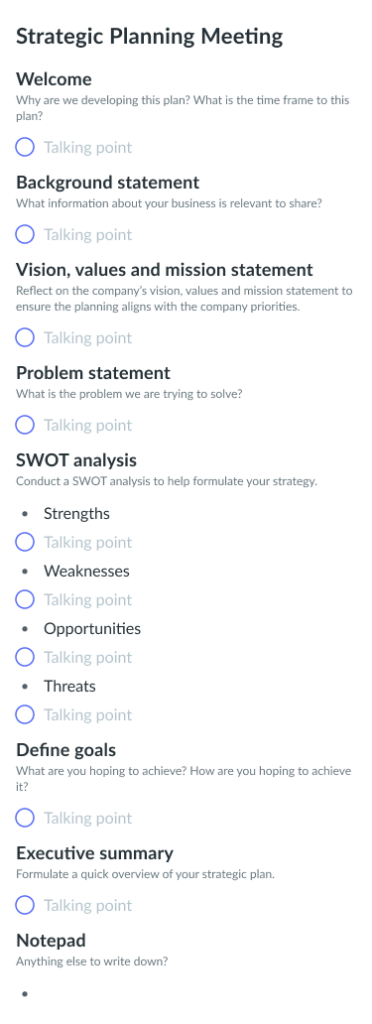
Parting advice
Not just anyone can walk into a meeting room and get what they’re asking for. If you’re looking at getting buy-in for your next great idea, you’ll want to take the time to carefully plan and pitch a detailed, yet simple look at your idea. If your decision-makers can immediately see the value of your project and the goals in place, you have a much higher chance of getting that green light!



![Improving Your Strategic Thinking Skills: 10 Tips [+Example]](https://fellow.app/wp-content/uploads/2023/05/strategic-thinking-skills2.jpg)
![12 Thoughtful Ways to Support Your Team [+ Free Template]](https://fellow.app/wp-content/uploads/2022/04/Ways-to-support-your-team-2.jpg)
![Writing Effective Email Announcements [+ Template]](https://fellow.app/wp-content/uploads/2022/10/Email-Announcement.jpg)

![Problem-Solving Meeting: What It Is and How to Run One [+ Free Template]](https://fellow.app/wp-content/uploads/2022/05/Problem-Solving-Meetings.jpg)


